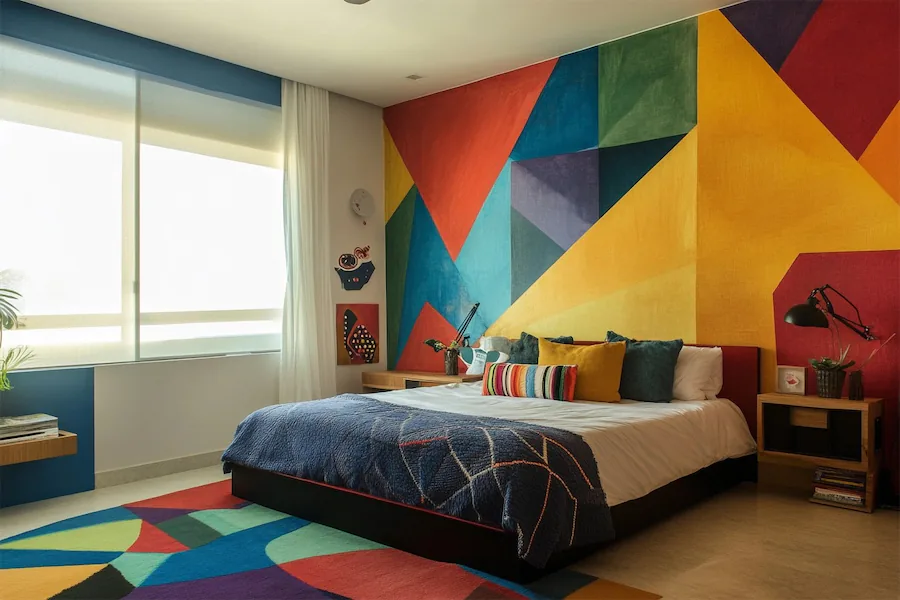An abstract-themed kid’s room embraces non-traditional designs, focusing on shapes, colors, and forms that don’t necessarily represent reality. This approach encourages children to think outside the box, fostering creativity and cognitive development.
History and Origins of Abstract Design
Abstract art emerged in the early 20th century as artists began to move away from realistic depictions, favoring instead the use of shapes, colors, and forms to convey emotions and ideas. In interior design, abstract elements have been incorporated to create dynamic and engaging spaces that provoke thought and inspire imagination.
Key Features of Abstract Kid Rooms
- Bold Wall Murals: Incorporate abstract wall murals featuring geometric shapes or freeform designs to serve as a focal point in the room. Murals add depth and character, transforming plain walls into artistic canvases.
- Vibrant Color Palette: Utilize a mix of bright and contrasting colors to create an energetic atmosphere. Abstract designs often play with unexpected color combinations, adding excitement and interest to the space.
- Unique Art Pieces: Display abstract art prints or paintings that resonate with your child’s personality. These pieces can be rotated over time to keep the room feeling fresh and inspiring.
- Creative Textiles: Incorporate bedding, rugs, and cushions with abstract patterns to tie the theme together. Mixing different textures and designs adds a playful touch and enhances the room’s visual appeal.
Applications of Abstract Design in Kid Rooms
- Interactive Spaces: Create areas where children can engage with abstract elements, such as chalkboard walls for drawing or magnetic boards with colorful shapes. These interactive features promote creativity and hands-on learning.
- Customized Furniture: Choose furniture pieces with unconventional shapes or bold colors to complement the abstract theme. For example, a bookshelf with asymmetrical shelves or a uniquely shaped bed can serve as functional art pieces.
- Dynamic Lighting: Incorporate lighting fixtures that double as abstract art, such as pendant lights with geometric designs or lamps with colorful, sculptural bases. Lighting plays a crucial role in highlighting the abstract elements and setting the mood of the room.
Considerations When Designing an Abstract Kid Room
- Balance: While abstract designs thrive on boldness, it’s essential to balance vibrant elements with neutral tones to prevent overstimulation. Incorporating white or muted backgrounds allows the abstract features to stand out without overwhelming the space.
- Adaptability: Design the room with flexibility in mind, allowing for updates as your child’s tastes evolve. Using removable wall decals or interchangeable decor items makes it easier to refresh the room’s look over time.
- Personalization: Involve your child in selecting abstract art pieces or colors to ensure the space reflects their individuality. Personal touches make the room more inviting and meaningful to your child.
Conclusion
An abstract-themed kid’s room offers a vibrant and stimulating environment that nurtures creativity and self-expression. By thoughtfully integrating abstract elements through art, color, and design, you can create a dynamic space that grows with your child, providing endless opportunities for imagination and inspiration.
